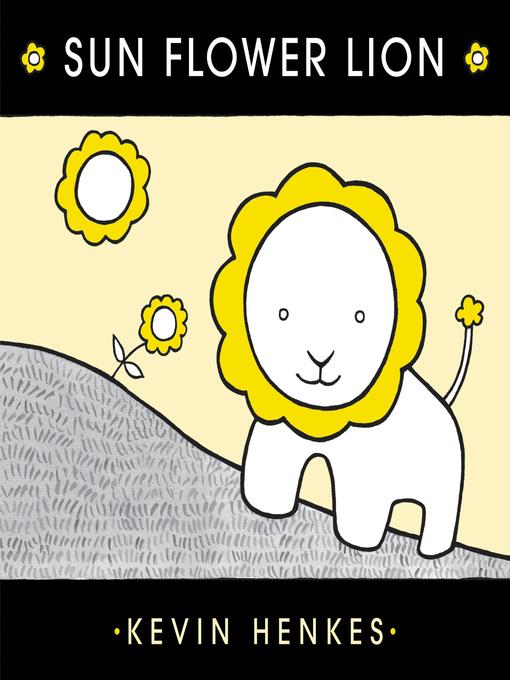
Sun Flower Lion
کتاب های مرتبط
- اطلاعات
- نقد و بررسی
- دیدگاه کاربران
نقد و بررسی

Starred review from June 15, 2020
A sun, a flower, and a lion. They look similar, no? Introduced in a wordless panel before the title page, the three figures bear at least two shapes in common. They're also the same combination of warm yellow and (somehow just as warm) white, outlined in thick black line that pops against the muted yellow background. The text, divided into six short chapters, goes on to introduce the figures in isolation: "This is the sun. / Can you see it?" the narrator asks before going on to proclaim that the sun "is as bright as a flower." When the flower is introduced, it's compared to a lion. The lion? He isn't compared to anything but instead smells the flower and warms himself in the sun. In the next chapter, the lion dreams that the flowers are sun-sized cookies. He wakes up hungry and runs home as fast as he can. Can readers spot him on the page? Using a vocabulary of fewer than 60 words and their variants--and a visual vocabulary of even fewer shapes and colors--Henkes creates an impeccably designed story that's rewarding for toddlers and early readers alike. The repetitive structure and tone call to mind the playful simplicity of Mem Fox and Judy Horacek's Where Is the Green Sheep? (2004). With imagination at its center, this participatory read-aloud also cleverly introduces the concept of simile ("It looks like a lion") and metaphor ("The flowers are cookies"). As brilliant as can be. (Picture book. 3-6)
COPYRIGHT(2020) Kirkus Reviews, ALL RIGHTS RESERVED.

June 29, 2020
Simple words and repeating forms draw beginning readers into this iterative volume by Henkes (Summer Song). Its central visual element, a circle with a ruffled edge, could signify the sun, a flower, or a lion with a mane—and here, it’s all three. Divided into six short chapters, the story’s sentences relate the three objects to each other. First, readers meet the sun: “The sun is in the sky./ It is shining./ It is as bright as a flower.” In chapter two, a ruffled circle appears with a stem and leaves; it’s a bloom that “looks like a little lion.” In chapter three, the motif forms the head of a stumpy feline (“He smells the flower./ He warms himself in the sun”) who dreams, wakes, and runs home. Readers see the hill, but not the traveling lion (“Can you see him?/ No, you can’t./ He is running too fast”). Yellow spreads convey warmth and light, while gray, hand-inked blades of grass cover the hill. Signlike artwork and straightforward text fit together as neatly as building blocks in this lighthearted reading exercise. Ages 4–8.

Starred review from August 1, 2020
Preschool-K *Starred Review* Masterfully employing brush and ink, with a striking color palette limited to yellow, black, white, and gray, Henkes creates a simple but thought-provoking story. Using panel illustrations, the book is divided into chapters, setting the pace of the narrative and helping the reader understand comparisons between items. The first chapter consists of two panels, both showing the sun, as bright as a flower. Chapter two introduces the flower?composed of the same core shape and colors as the sun?while the text makes the first mention of the lion. Chapter three brings it all together, as a lion?whose head also bears the same design as the sun and flower?sniffs the flower and warms himself in the sunlight. In chapter four, the panels now have scalloped edges because the lion is dreaming, the curves again echoing the design of the lion's mane, the flower's petals, and the sun's rays. Chapter five begins the ending progression, and by chapter six, the lion is home with his family. He runs, eats, and goes to sleep surrounded by safety and love, which results in an image of pure happiness. A perfect book for storytime reading or family bedtime sharing, this is completely accessible for the youngest readers, while providing an intriguing visual and print literacy experience for older ones.(Reprinted with permission of Booklist, copyright 2020, American Library Association.)

August 14, 2020
PreS-K-A white circle with a scalloped yellow border-is it the sun? A flower? A lion? It's all three. Across six two-page chapters, readers are asked if they can see the Sun, Flower, and Lion-first by themselves and then added to a scene with one another: the flower looks like a little lion, the lion smells the flower, and warms himself in the sun. Chapter 4 deviates from pattern, entering a dream sequence (with the panels taking on scalloped edges reminiscent of the title items). In Chapter 5 the story returns to form, with a subversion; when readers are asked if they can see the lion, they cannot because "He is running too fast." Chapter 6 sees the contented lion sleeping at home with his family, and the text returns to the repetition of "Can you see him? Yes, you can." Skillful interconnections between the distinctive illustrations and the brief text make this title a great pick for beginning readers. A limited three-color palette and thick black outlines evoke the simplicity and two-dimensional quality of a child's drawing. The humor relies on playfulness among similar illustrations, while the deliberate use of few colors allow readers to recognize the repetition of the title shapes throughout, down to the final spread where the flower and sun peek into the corners of the scene of the little lion dozing with his family. VERDICT With a return to a distinct and limited color palette like that of Henkes's award-winning Kitten's First Full Moon, this is a must have for all collections, appropriate for both sharing out loud and for beginning readers.-Amanda Foulk, Sacramento P.L.
Copyright 2020 School Library Journal, LLC Used with permission.

























دیدگاه کاربران